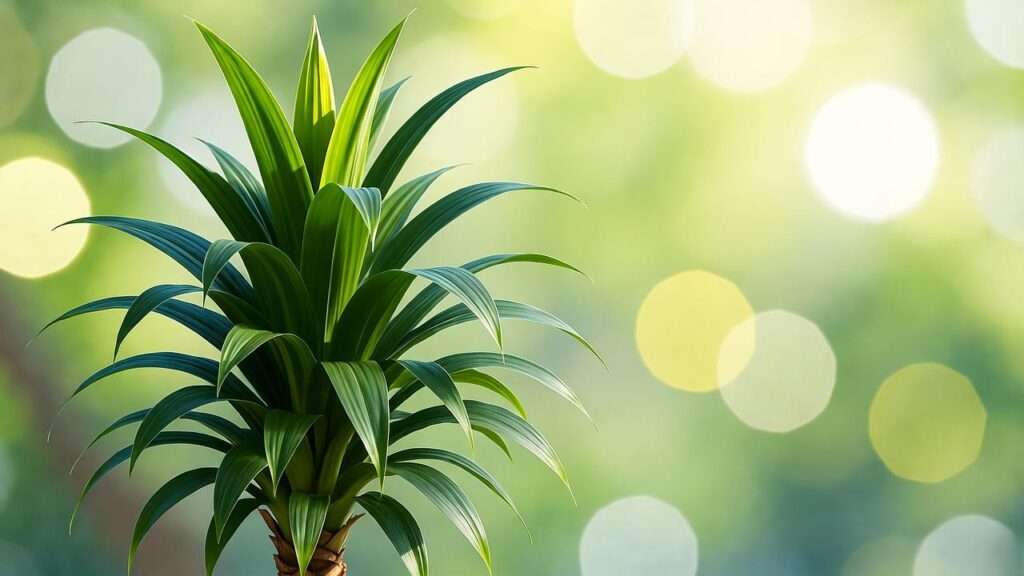Imagine a lush, tropical vibe in your living room with a vibrant mass cane plant stealing the show! This stunning houseplant, with its tall, cane-like stems and glossy green leaves, is a favorite for plant lovers and beginners alike. Whether you’re looking to elevate your home decor or purify your indoor air, the mass cane plant (Dracaena fragrans) is a low-maintenance, high-impact choice. But how do you ensure it stays healthy and vibrant year-round? In this comprehensive guide, we’ll share seven expert-backed tips to help your mass cane thrive indoors. Drawing on years of plant care expertise and insights from horticulturists, this article will equip you with practical, actionable advice to solve common care challenges and keep your plant flourishing. Let’s dive in! 🌞
What Is a Mass Cane Plant? 🌴
Overview and Characteristics
The mass cane plant, scientifically known as Dracaena fragrans, is a tropical beauty native to Africa. Its striking appearance—tall, sturdy stems topped with long, arching leaves—makes it a go-to for indoor spaces. Often called corn plant due to its resemblance to corn stalks, it can grow up to 6 feet tall indoors, adding a dramatic flair to any room. This plant is prized for its air-purifying qualities, removing toxins like formaldehyde, and its adaptability to various indoor conditions.
Mass canes are forgiving, making them ideal for both seasoned plant parents and novices. They thrive in moderate light and require minimal fuss, but understanding their needs is key to unlocking their full potential.
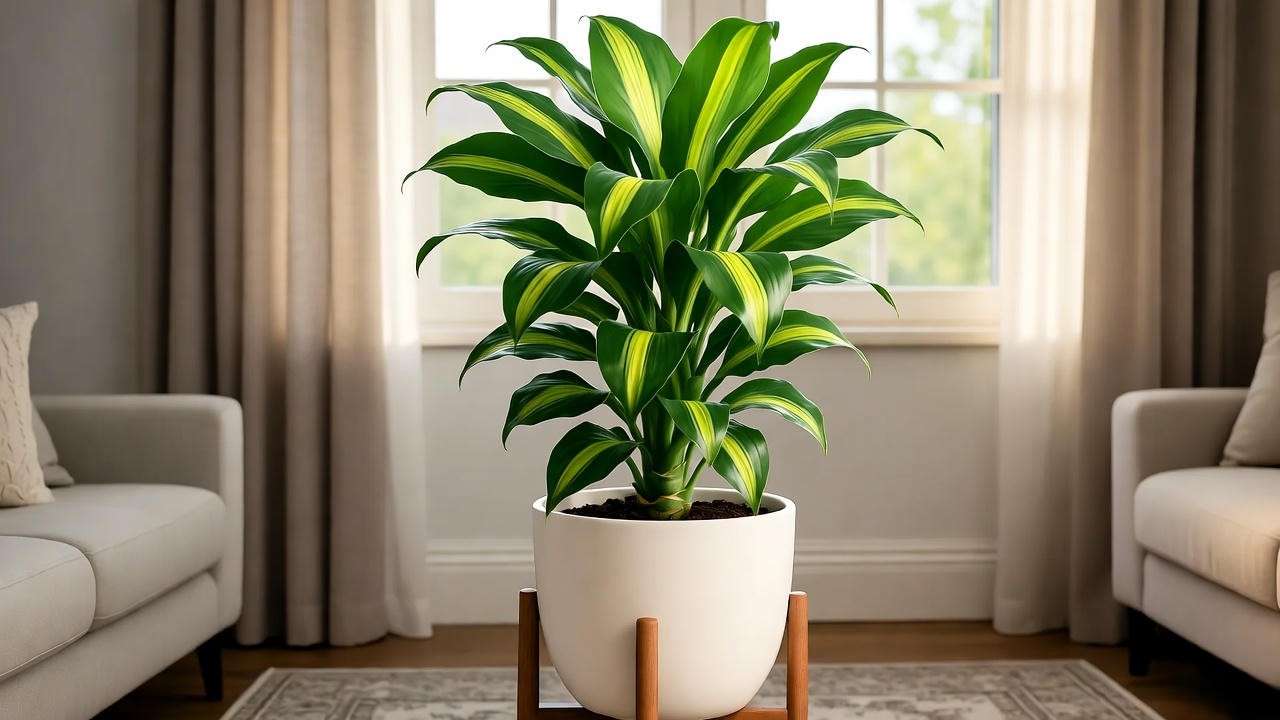
Common Varieties
Not all mass cane plants are the same! Popular cultivars include:
- ‘Massangeana’: Features vibrant green leaves with a yellow stripe down the center, creating a bold, eye-catching look.
- ‘Compacta’: A smaller, bushier variety perfect for tight spaces.
- ‘Lindenii’: Known for its cream-colored leaf margins, adding a softer aesthetic.
Each variety has slightly different care needs, but the tips in this guide apply universally. “Mass cane plants are a fantastic choice for beginners because they’re resilient yet reward proper care with stunning growth,” says Dr. Emily Carter, a horticulturist with over 15 years of experience in tropical plant care.
Why Proper Care Matters for Your Mass Cane Plant 🌞
Common Challenges
Without proper care, mass cane plants can face issues like yellowing leaves, brown tips, or drooping stems. These problems often stem from incorrect watering, poor lighting, or inadequate humidity. By mastering the essentials, you can prevent these issues and ensure your plant remains a vibrant focal point in your home.
Benefits of a Healthy Mass Cane
A well-cared-for mass cane plant does more than just look good. It:
- Purifies the air: Removes indoor pollutants, improving your home’s air quality.
- Boosts mood: Studies show that indoor plants reduce stress and enhance well-being.
- Enhances decor: Its lush foliage adds a tropical touch to any space.
- Lasts for years: With proper care, mass canes can thrive for decades.
Quick Checklist: To assess your mass cane’s health, check for glossy leaves, firm stems, and consistent growth. Yellowing or wilting? Don’t worry—this guide will help you troubleshoot!
Tip 1 – Provide the Right Light Conditions ☀️
Ideal Lighting for Mass Cane Plants
Mass cane plants thrive in bright, indirect light, mimicking their natural tropical habitat. Place your plant near an east or west-facing window where it can bask in filtered sunlight. North-facing windows may work for low-light-tolerant varieties like ‘Compacta,’ but avoid dim corners to prevent leggy growth.
If natural light is limited, consider using a full-spectrum grow light to supplement. Aim for 6-8 hours of light daily to keep your mass cane happy.

Avoiding Common Lighting Mistakes
Too much direct sunlight can scorch leaves, causing brown, crispy edges. Conversely, too little light leads to slow growth and pale foliage. To fix this:
- Use sheer curtains to diffuse harsh sunlight.
- Rotate your plant every few weeks for even light exposure.
- If using grow lights, position them 12-18 inches above the plant.
Real-Life Example: Sarah, a plant enthusiast from Seattle, noticed her mass cane’s leaves fading in a dim corner. After moving it to a brighter spot near a window with a sheer curtain, her plant regained its vibrant green hue within weeks.
Tip 2 – Master Watering Techniques 💧
How Much Water Does a Mass Cane Need?
Watering is where many mass cane owners stumble. These plants prefer a “less is more” approach. Water every 1-2 weeks, allowing the top inch of soil to dry out between waterings. In winter, reduce frequency as the plant’s growth slows. Use a moisture meter or your finger to check soil dryness.
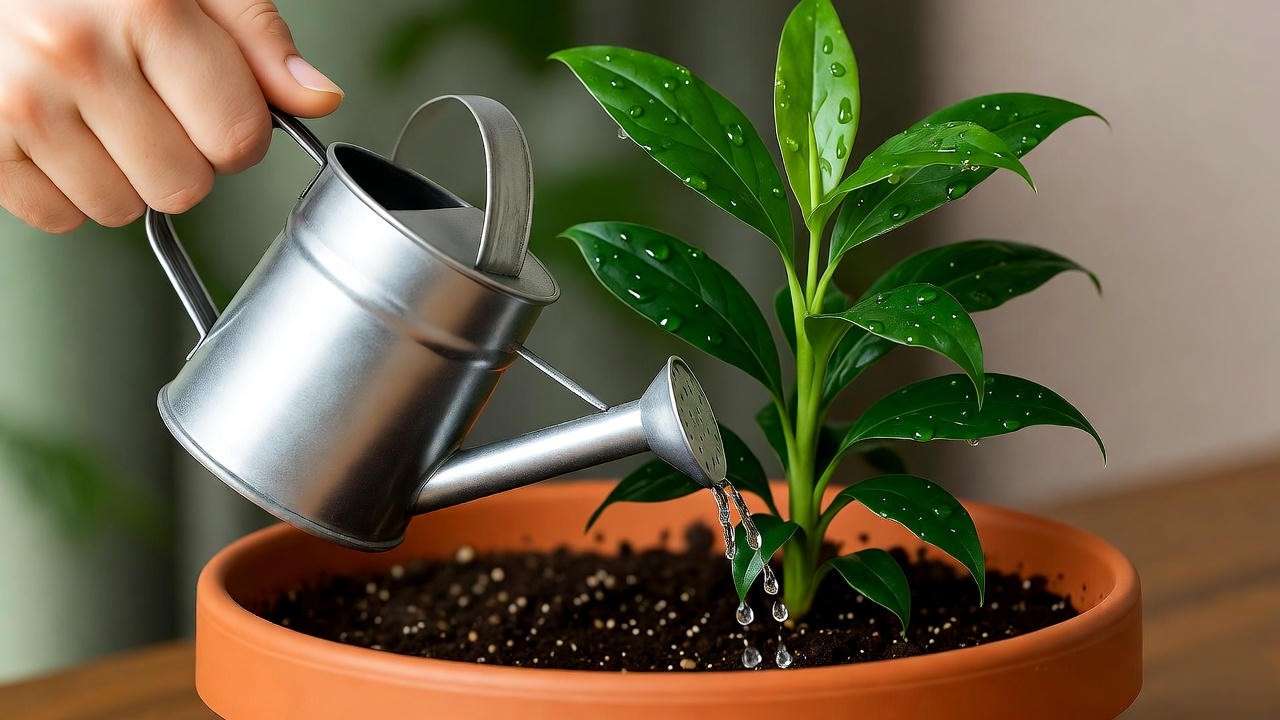
Signs of Overwatering and Underwatering
- Overwatering: Yellowing leaves, soggy soil, or a musty smell indicate root rot. Let the soil dry out and adjust your schedule.
- Underwatering: Drooping or browning leaves signal thirst. Water thoroughly and monitor more closely.
Expert Tip: Mass canes are sensitive to fluoride in tap water, which can cause leaf tip burn. Use distilled or filtered water for best results. “This simple switch can make a huge difference,” notes Dr. Carter.
Tip 3 – Maintain Optimal Humidity and Temperature 🌡️
Ideal Conditions
Mass cane plants love warm, humid environments. Aim for:
- Temperature: 65-80°F (18-27°C).
- Humidity: 40-60%, typical of tropical climates.
To boost humidity, try:
- Placing a pebble tray filled with water beneath the pot.
- Using a humidifier near the plant.
- Grouping plants together to create a microclimate.
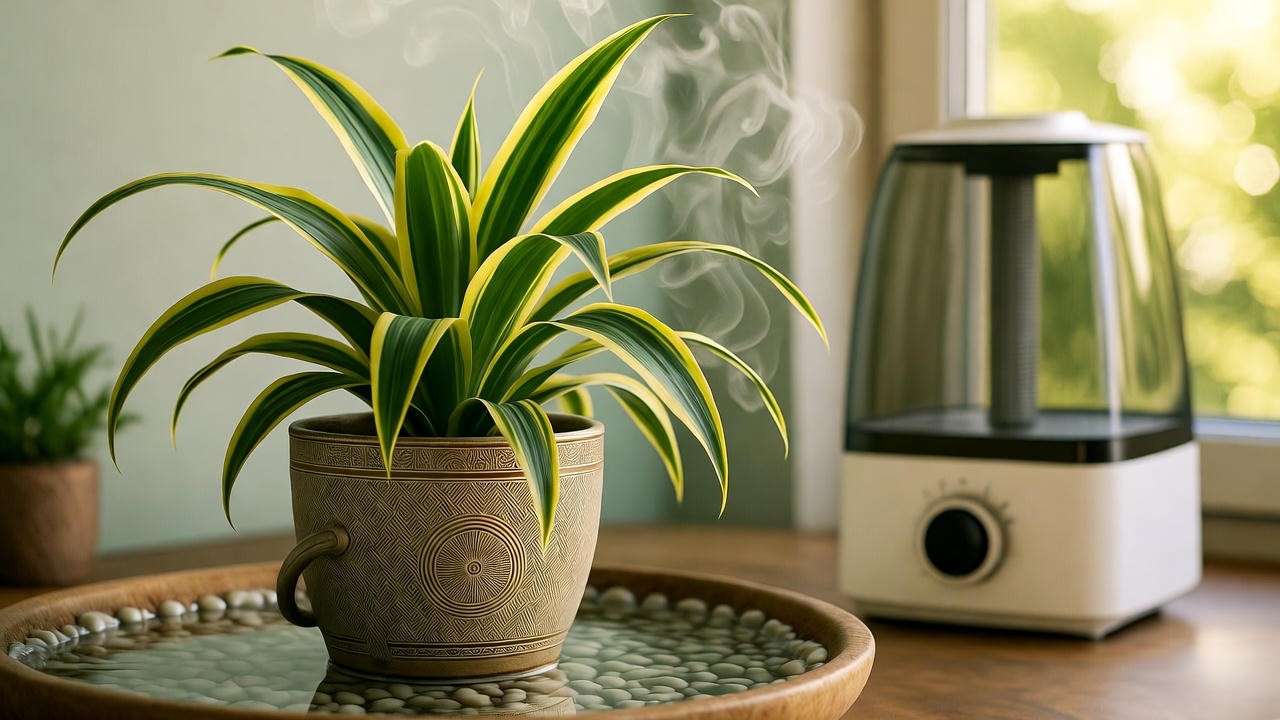
Protecting Your Plant from Extremes
Avoid placing your mass cane near drafty windows, air conditioning vents, or heaters, as temperature fluctuations stress the plant. In winter, move it away from cold windows to maintain warmth.
Fun Fact: Mass cane plants thrive in conditions that mimic their African origins, so think warm, humid, and cozy!
Tip 4 – Choose the Right Soil and Pot 🪴
Best Soil Mix for Mass Cane Plants
A well-draining soil mix is crucial to prevent root rot. Combine:
- 50% potting soil
- 25% peat moss or coco coir
- 25% perlite or sand
This mix ensures proper drainage while retaining enough moisture for healthy roots. Avoid heavy, clay-like soils that stay soggy.
Selecting the Perfect Pot
Choose a pot with drainage holes to prevent water buildup. Size matters—select a pot 1-2 inches larger than the root ball to allow growth without drowning the roots. Terra-cotta or ceramic pots work well, adding stability for tall mass canes.
DIY Tip: Create your own soil mix by blending equal parts potting soil and perlite with a handful of peat moss for a budget-friendly, mass cane-friendly mix.
Tip 5 – Fertilize Wisely 🌿
When and How to Fertilize
Feed your mass cane a balanced, water-soluble fertilizer (e.g., 10-10-10) once a month during spring and summer. Dilute to half-strength to avoid burning the roots. Skip fertilizing in fall and winter when growth slows.
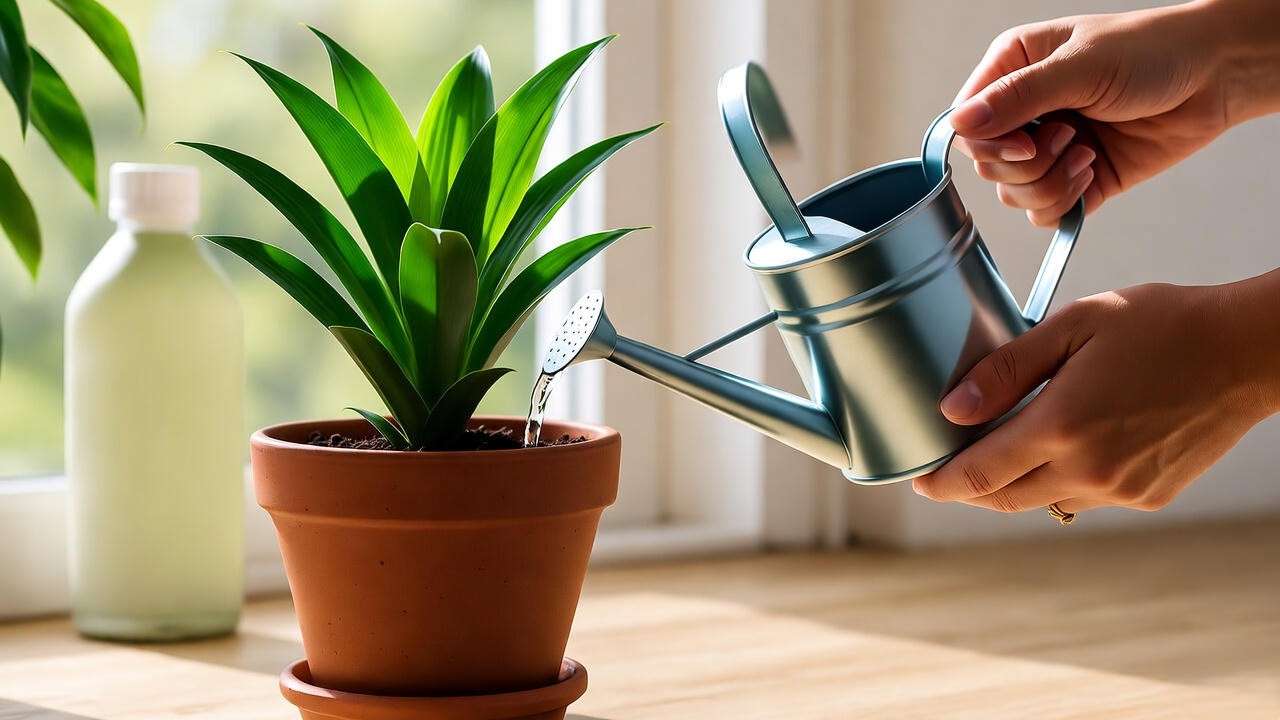
Signs of Nutrient Deficiency
Look for:
- Yellowing leaves (nitrogen deficiency).
- Slow growth or small leaves (lack of phosphorus or potassium).
If you notice these signs, apply a balanced fertilizer and monitor progress.
Expert Insight: “Over-fertilizing is a common mistake,” warns Dr. Carter. “Stick to a light feeding schedule to keep your mass cane healthy without overwhelming it.”
Tip 6 – Prune and Maintain for Healthy Growth ✂️
Pruning Basics
Pruning your mass cane plant keeps it healthy and attractive. Regular pruning removes dead or yellowing leaves, encourages new growth, and maintains its shape. Use clean, sharp pruning shears to avoid tearing the plant tissue. Here’s how to do it:
- Identify yellow, brown, or damaged leaves.
- Cut close to the stem at a 45-degree angle to minimize stress.
- Wipe your shears with rubbing alcohol before and after to prevent disease spread.
Prune sparingly, focusing only on unhealthy foliage, as mass canes grow slowly. Regular maintenance also includes wiping leaves with a damp cloth to remove dust, which improves photosynthesis.
Shaping Your Mass Cane
Mass canes can grow tall and leggy over time, so shaping is key to maintaining their aesthetic appeal. To encourage a fuller look:
- Trim the top of a stem to promote branching.
- Remove lower leaves if they yellow naturally as the plant matures.
Propagation Bonus: You can propagate mass cane cuttings! Cut a 4-6 inch stem section, place it in water or moist soil, and wait for roots to develop (4-6 weeks). This is a great way to share your plant with friends or grow new ones for your collection.
Step-by-Step Guide:
- Select a healthy stem with at least one node.
- Cut below the node and remove lower leaves.
- Place in a jar of water or a pot with moist soil.
- Keep in bright, indirect light and change water weekly (if propagating in water).
- Transplant to soil once roots are 1-2 inches long.
Tip 7 – Troubleshoot Common Problems 🩺
Identifying Issues Early
Even with the best care, mass cane plants can face challenges. Catching issues early is key to keeping your plant thriving. Common problems include:
- Brown leaf tips: Often caused by low humidity, fluoride in water, or over-fertilizing.
- Yellowing leaves: Typically a sign of overwatering or poor drainage.
- Drooping stems: Indicates underwatering or insufficient light.
Check your plant weekly for these signs and adjust care as needed.
Pest Control and Prevention
Mass cane plants are relatively pest-resistant but can attract spider mites, mealybugs, or scale. To manage pests:
- Inspect regularly: Look under leaves and along stems for tiny webs or sticky residue.
- Natural remedies: Spray with neem oil or insecticidal soap, diluted as per instructions.
- Prevention: Keep leaves clean and maintain proper humidity to deter pests.
Quick Reference Table:
| Problem | Cause | Solution |
|---|---|---|
| Brown leaf tips | Low humidity, fluoride sensitivity | Use distilled water, increase humidity |
| Yellowing leaves | Overwatering, poor drainage | Let soil dry out, check pot drainage |
| Drooping stems | Underwatering, low light | Water thoroughly, move to brighter spot |
| Pests (e.g., spider mites) | Dry conditions, poor maintenance | Apply neem oil, clean leaves regularly |
Bonus Tips for Long-Term Success 🎉
Repotting Your Mass Cane
Repot every 2-3 years or when the plant becomes rootbound (roots circling the pot). Choose a pot 1-2 inches larger in diameter and follow these steps:
- Gently remove the plant from its pot.
- Shake off excess soil and trim any damaged roots.
- Place in a new pot with fresh, well-draining soil mix.
- Water lightly and keep in indirect light for a week to reduce stress.
Repotting refreshes nutrients and gives roots room to grow, ensuring long-term health.
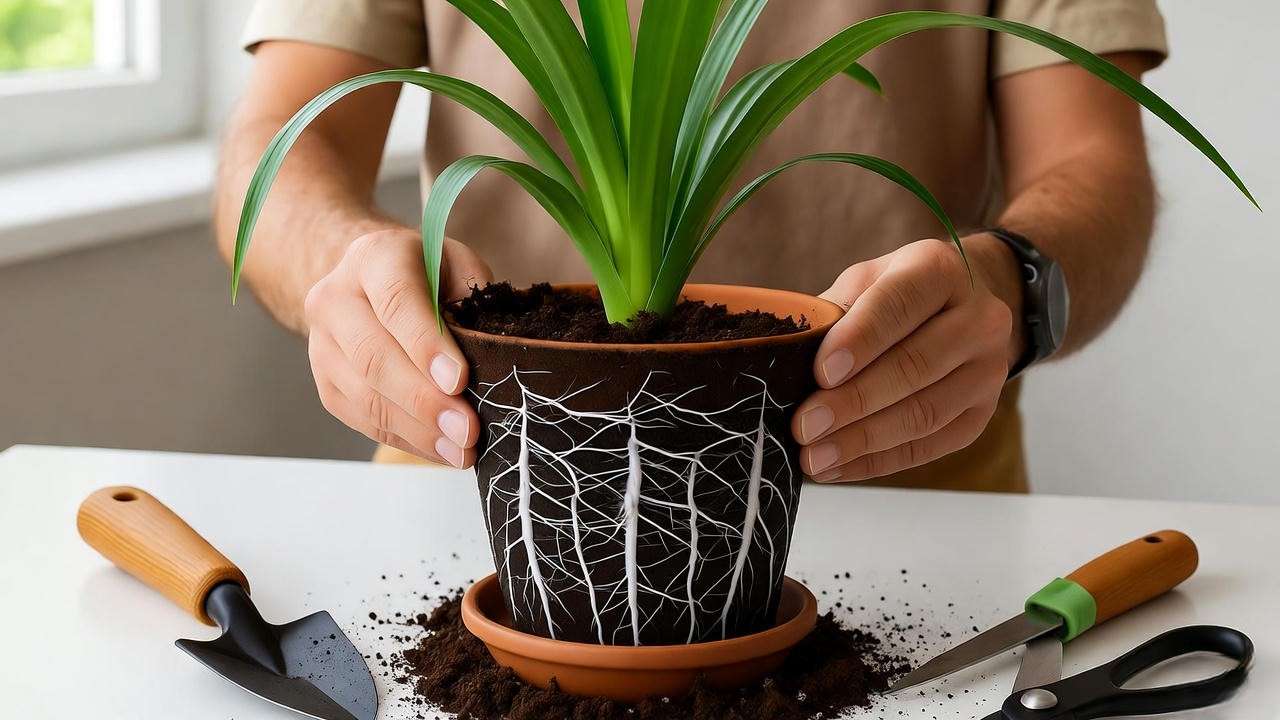
Enhancing Aesthetic Appeal
Mass cane plants are natural showstoppers! Elevate their look with:
- Decorative pots: Choose ceramic or woven pots to complement your decor.
- Strategic placement: Place in a corner to add height or near furniture for a tropical vibe.
- Companion plants: Pair with low-maintenance plants like pothos or snake plants for a lush indoor jungle.
Pet Safety
Mass cane plants are mildly toxic to pets, causing vomiting or lethargy if ingested. Keep them out of reach of cats and dogs, or opt for pet-safe plants if this is a concern. Always consult a vet if you suspect your pet has nibbled on your mass cane.
Frequently Asked Questions (FAQs) ❓
Why is my mass cane plant’s leaves turning brown?
Brown leaf tips are often due to low humidity, fluoride in tap water, or over-fertilizing. Switch to distilled water, increase humidity with a pebble tray, and reduce fertilizer use.
Can a mass cane plant survive in low light?
Yes, mass canes tolerate low light, but they thrive in bright, indirect light. In low-light conditions, growth may slow, and leaves may lose vibrancy. Consider a grow light for darker spaces.
How often should I repot my mass cane?
Repot every 2-3 years or when roots outgrow the pot. Spring is the best time to repot for minimal stress.
Is the mass cane plant safe for pets?
Mass canes are mildly toxic to cats and dogs. Keep them out of reach or choose pet-friendly plants like spider plants.
How do I propagate a mass cane plant?
Cut a 4-6 inch stem, place it in water or soil, and keep it in bright, indirect light. Roots should form in 4-6 weeks.
Conclusion – Grow a Thriving Mass Cane Plant! 🌟
Caring for your mass cane plant is a rewarding journey that brings tropical beauty and cleaner air to your home. By following these seven essential tips—providing the right light, mastering watering, maintaining humidity, choosing proper soil, fertilizing wisely, pruning regularly, and troubleshooting issues—you’ll ensure your mass cane thrives for years. Whether you’re a beginner or a seasoned plant parent, these expert-backed strategies, informed by horticultural research and real-world experience, will help you avoid common pitfalls and enjoy a lush, healthy plant.
Ready to make your mass cane the star of your indoor jungle? Apply these tips today, share your success in the comments, or connect with our plant care community on social media using #MassCaneMagic! 🌿 For more plant care guides, check out our articles on Dracaena varieties, air-purifying plants, or low-maintenance houseplants. Happy growing!

